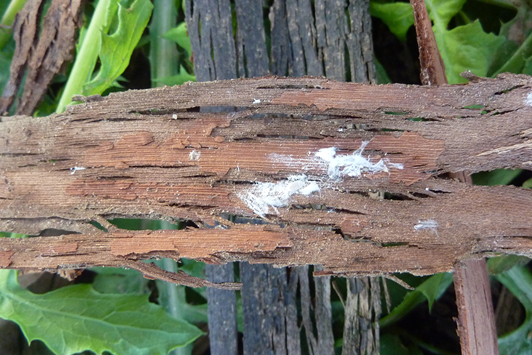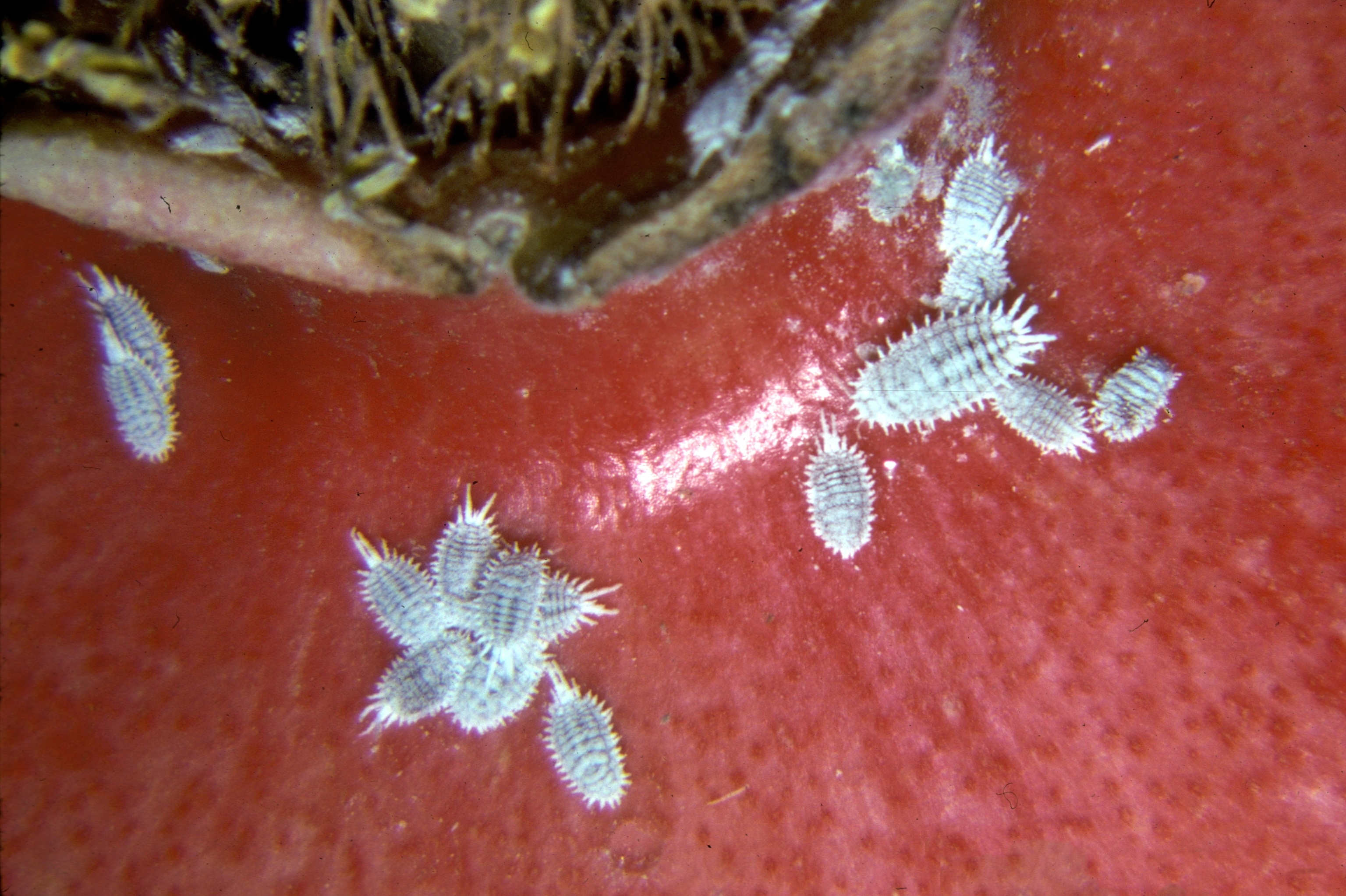
Citrophilus mealybug is a declared pest in WA
Citrophilus mealybug is not known to occur in WA and must be reported to the department if found or suspected to be present in WA.
Early detection is critical to help protect WA’s horticultural industries.
About Citrophilus mealybug
Citrophilus mealybug (Pseudococcus calceolariae) is a serious pest of many horticultural industries.
The mealybugs extract sap from a variety of plants, including fruits, vegetables, trees, and ornamental plants.
This results in downgrading of fruit quality and can affect fruit production.
The main host plants for citrophilus mealybug are:
- Fruit and vegetables: apple, carrot, citrus, European grape, fig, pea, peanut, pear, potato, quince, raspberry, stone fruit and walnut are common hosts.
- Trees and ornamentals: grevillea, hibiscus, Monterey pine, oleander and rhododendron are also common host plants.
- When poked, citrophilus mealybugs will excrete dark red honeydew, whereas typical mealybug species excrete pale yellow honeydew.
- Adult females are slow moving, oval-shaped insects about 3–4mm long with a covering of white, mealy wax.
- Adult males are small, delicate, winged insects with long tail filaments. They survive only a few days to mate and do not feed.
- Nymphal stages include multiple instars (phases between moults). Initial female instars are mobile and look like small adults with minimal wax covering. With subsequent moults they become increasingly sessile and have greater wax covering.
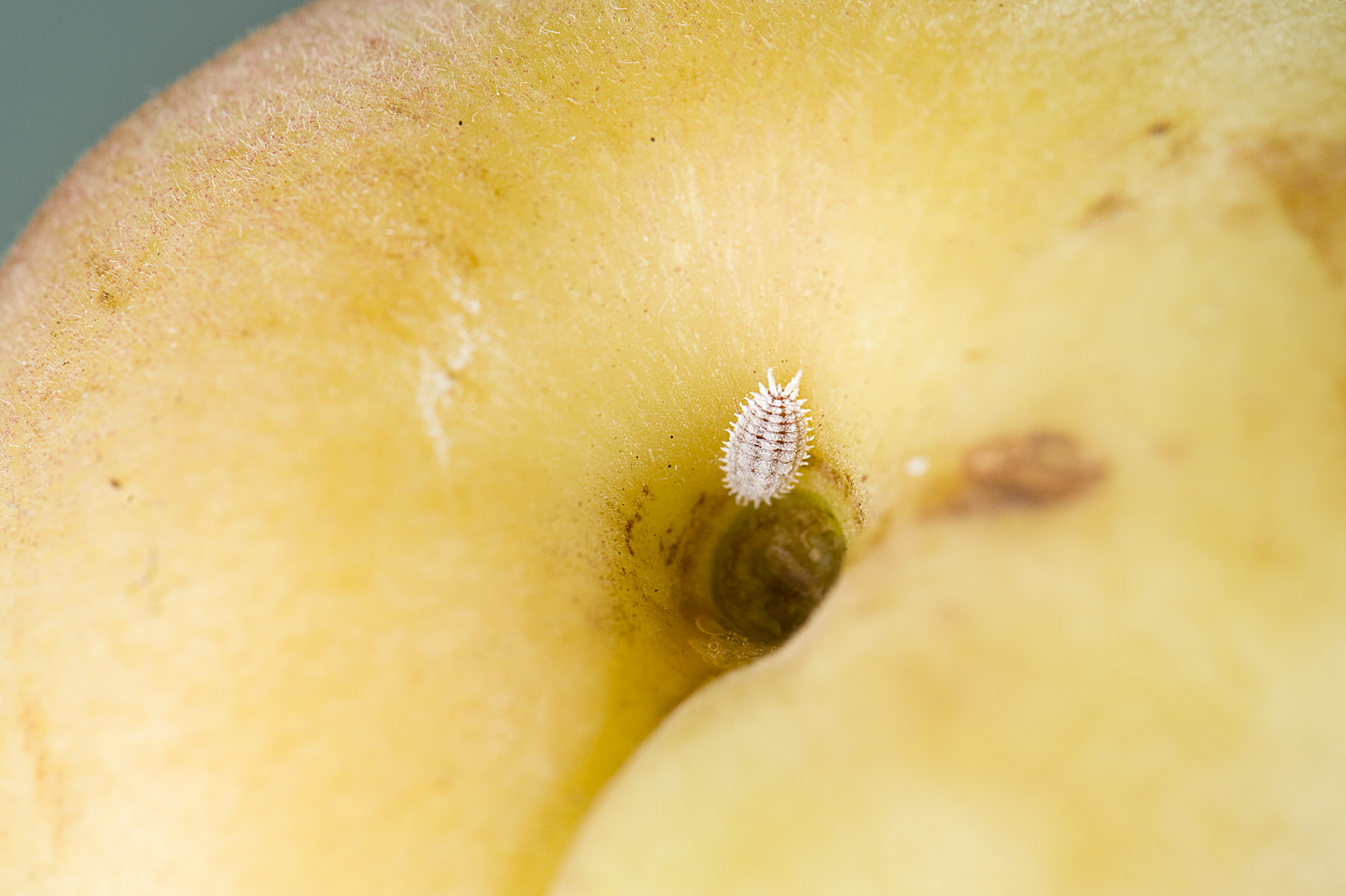
- Citrophilus mealybugs extract sap from plants which reduces the plants’ vigour and production.
- Citrophilus mealybugs secrete large amounts of honeydew which encourages development of sooty mould. High concentration sooty mould can reduce photosynthesis of affected plants.
- Presence of honeydew and sooty mould in fruit downgrades the quality and severe infestations may render fruit unmarketable.
- Mealybugs generally are vectors of grapevine leafroll associated viruses, banana streak virus and pineapple mealybug wilt-associated virus.
- Eggs are laid in groups of up to 500 in egg sacs that may be attached to leaves, bark, fruit or branches.
- There can be 3-4 generations throughout a year.
- Late-stage instars and adult mealybugs overwinter under bark of deciduous fruit trees.
- Nymphs are the main means of citrophilus mealybug spread within a property as they may disperse by wind or by hitchhiking on animals and people.
- New infestations on properties may be caused by moving infested fruit and nursery stock, or as insects hitchhiking on animals and people.
|
Citrophilus mealybugs secrete red droplets when disturbed |
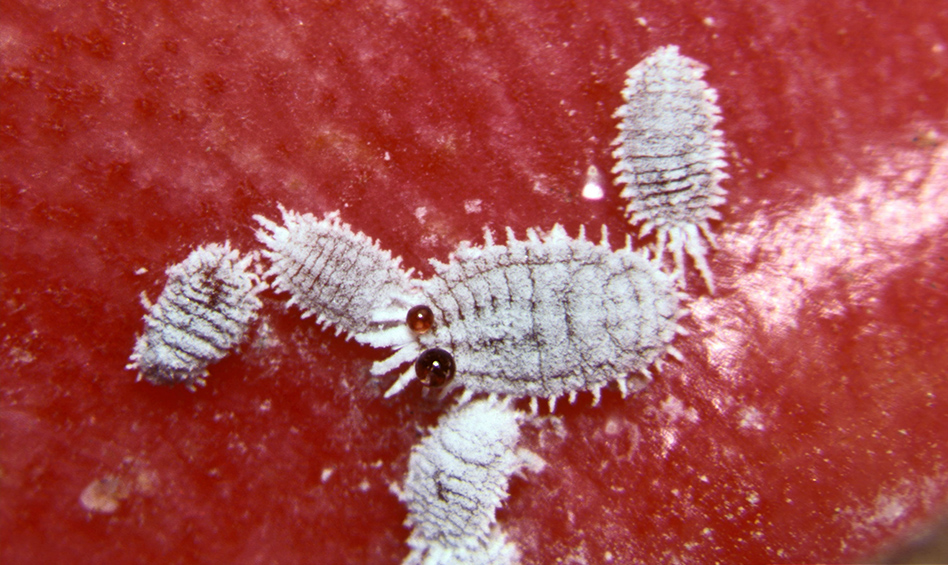 |
|
Late stage nymphs and adults overwinter under bark on deciduous fruit trees |
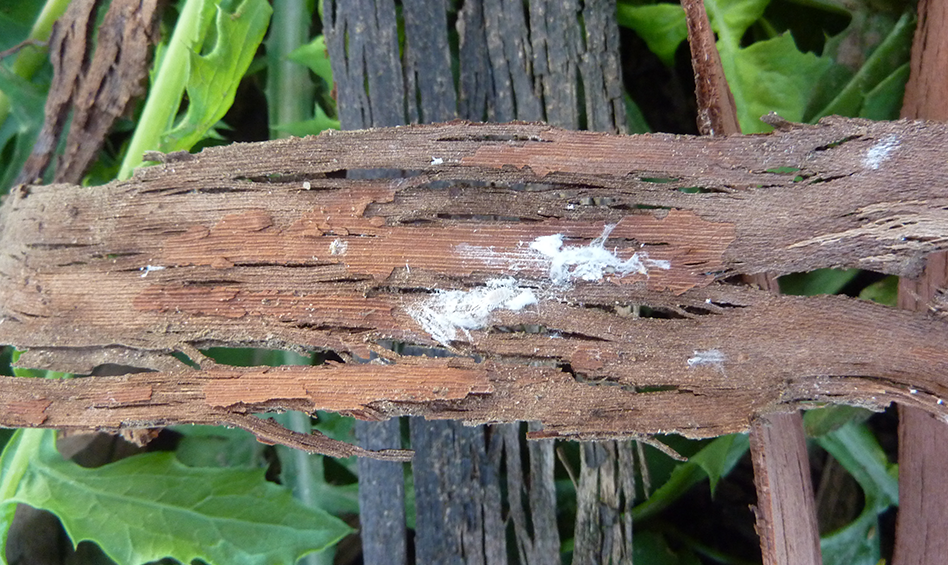 |
Western Australia's freedom from citrophilus mealybug is supported by general and specific surveillance and specific import requirements to prevent its entry.
Legal duty to report
Citrophilus mealybug is not known to occur in WA.
Pseudococcus calceolariae (Maskell, 1879) is a declared pest under section 12 of the Biosecurity and Agriculture Management Act 2007.
This means that any person who finds or suspects the presence of citrophilus mealybug must report it to the department.

